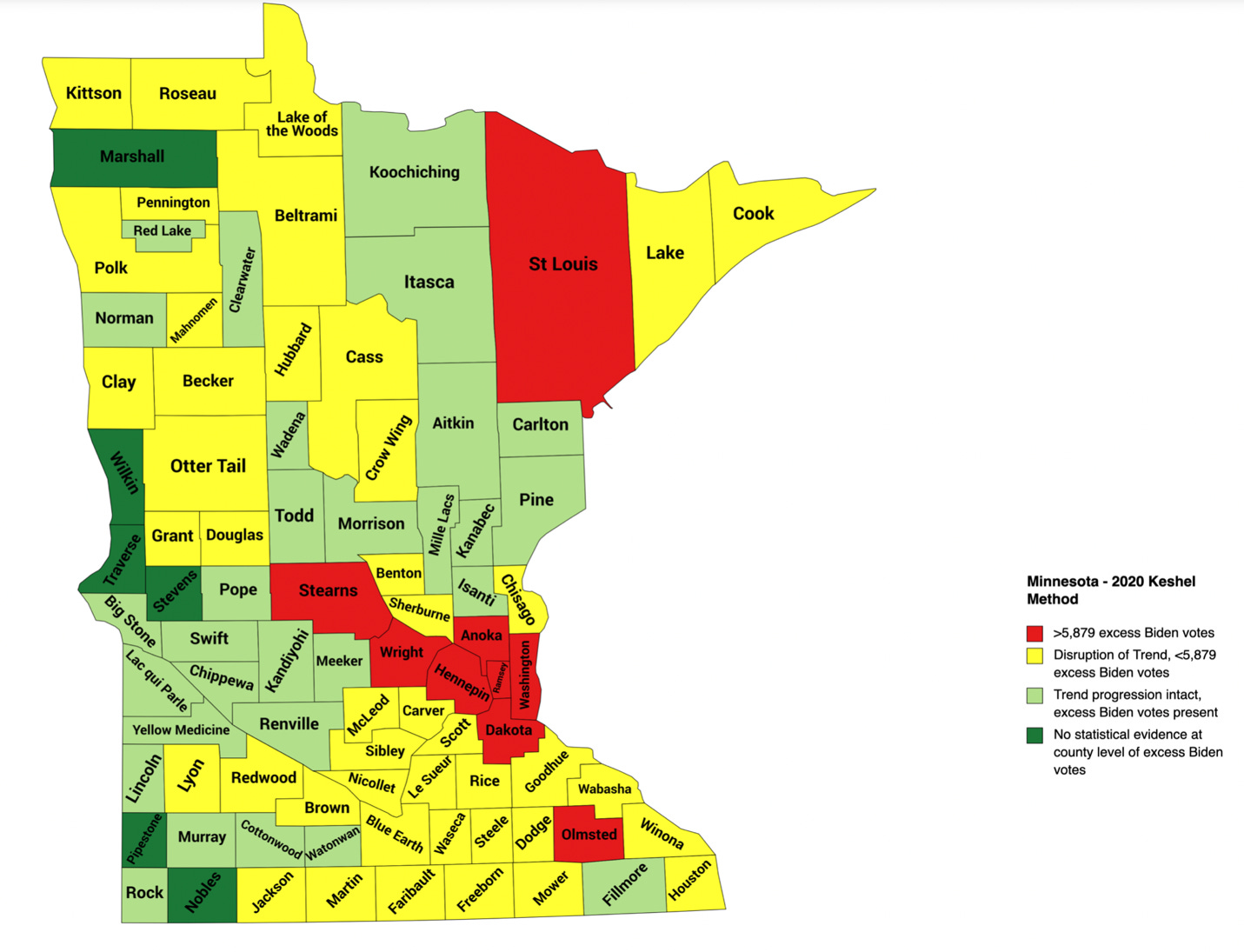2024 Leaner Deep Dive and Forecast: Minnesota (10 Electoral Votes)
Topic: 2024 Election Forecast
MINNESOTA
Basic Election Facts
2024 Electoral Votes: 10
Population (2020 Census): 5,706,494 (+302,571 since 2010)
Likely Population at 2024 Election: 5,750,000
-
Partisanship
Governor Party: Democrat
State House Majority: Democrat
State House Majority: Democrat
U.S. House Delegation: 4 Democrats, 4 Republicans
U.S. Senate Delegation: 2 Democrats
-
Ethnic Demographics (2020 census)
White: 77.5%
Black: 7.0%
Latino: 5.1%
Other: 10.4%
-
Presidential History since 1932
Times Republican: 3
Last: Richard Nixon, 1972, +5.5%
Times Democrat: 20
Last: Joe Biden, 2020, +7.1%
-
Presidential Election Characteristics
· Minnesota is the Republican Party’s white whale. It has not backed a GOP presidential nominee since Richard Nixon in 1972, although five races have been within 5% since then, including Donald Trump’s 1.5% setback in 2016 and Ronald Reagan’s 0.18% (3,761 votes) 1984 loss to Minnesota’s own Walter Mondale (the only state he won). No other state has a longer active streak of supporting Democrat presidential nominees.
· Minnesota’s vote is dominated by the Twin Cities metro region, and mainly its two dominant counties, Hennepin and Ramsey Counties. The latter contains the state capital of St. Paul, and the former contains metro Minneapolis. The two contributed nearly a third of all counted ballots in the 2020 race.
· Minnesota has been the most loyal Democrat state not only on its current streak since 1976, but dating back to 1932, from which it has backed just three GOP presidential nominees - fewer times than Massachusetts or Rhode Island. This has been made possible by its heavy union influence in mining and timber, and by the former disposition of the agricultural industries toward the Democrat Party. The left-wing influence of Hennepin County has been a more dominant undertone for the past three decades as the more remote areas have “reddened.”
Looking Back
You know how I know Minnesota ran a corrupt presidential quasi-election in 2020? I can prove it with numbers, as I’m known to do, but my two favorite examples are behavioral examples. First, President Trump campaigned heavily for Minnesota in 2020 after only missing out on its 10 electoral votes by 1.5% in 2016. He didn’t need Minnesota to win given that it lies consistently left of Pennsylvania, Michigan, and Wisconsin, which would have given him a winning margin in the Electoral College anyway but went for it to put Biden on the defensive. Somehow, when all the ballots were counted, he lost the state by more votes than Mitt Romney did in 2012, and by only a slightly decreased margin of defeat as a percentage.
Second, Minnesota’s subversive Attorney General, Keith Ellison, piped up on social media late in the afternoon on Election Day and very plainly stated, “We don’t have all of the votes we need quite yet.” Huh? It’s 3:57 p.m. and your party, which votes early for weeks and gathers every ballot under the sun still doesn’t have the votes needed to beat Donald Trump? Since Election Day turnout was massively in favor of Trump and only four hours and three minutes remained until poll closure, how were you on the verge of getting enough voters out to the polls to beat Trump by 233,012 ballots?
My numbers suggest Minnesota would have been the closest state in the in the nation in a fair race in 2020, and I have it narrowly in Trump’s column with both candidates short of a majority, with Biden showing a gain of 94,500 votes over Clinton in 2016 despite two consecutive cycles of decline. I afforded this gain by reallocating what was a nearly 9% third-party vote share from 2016, and I was also extremely lenient on Hennepin and Ramsey Counties estimates for ballot stuffing, putting them at 68,623 and 25,620 high, respectively. You can review my state-level findings here.
Minnesota, as is standard, fell to the left of Pennsylvania, Michigan, and Wisconsin, and clearly engaged in some defensive maneuvering after getting a wakeup call in 2016. It does not escape my mind that Minneapolis is exactly where the George Floyd “Summer of Love” fiasco kicked off, nor is it outside my view that for a fairly moderate state, Minnesota’s government engages in Soviet-style tactics to thwart the will of its own people. After all, both Rhode Island and Massachusetts (4 times each), have backed more GOP presidential nominees than Minnesota has since 1932, when New Deal politics emerged in the United States along with the election of Franklin D. Roosevelt as President.
Looking Forward
That was then, this is now. President Trump’s team has once again zeroed in on Minnesota on its expanded battleground map, which must mean their internal numbers match mine and detect a massive shift in the North Star State matching that which is obvious in Wisconsin and Iowa. In fact, if President Trump can take Iowa by just 13%, which lags Ann Selzer’s latest poll of Trump +18%, nine decades of presidential election history suggest there should be no way Biden can hang on to Minnesota. You’ll want to read that analysis contrasting movement in Iowa’s presidential shifting to corresponding movement in Wisconsin and Minnesota before proceeding.
In this forecasting series, I account for changes to the law and the presence of modern election rigging, particularly of the urban variety that easily overwhelms the massive countryside of a given state. Minnesota is one of 18 states that Biden won or “won” in 2020 with a margin greater in a single county (Hennepin) than all possible combinations of Republican margins found elsewhere in the state. In fact, Minnesota and Virginia fit the same model for analysis, with each state pitting a single contiguous region against the remainder of the state. In Virginia, that is NoVA (Northern Virginia – the ten counties and independent cities making up the northeastern corner of the state nearest Washington, D.C.) versus RoVA – the Rest of Virginia. In Minnesota, the battle essentially comes down to the counties of the Twin Cities (Hennepin and Ramsey Counties) against the Rest of Minnesota, 85 counties spread over a vast geographic space.
Minnesota’s electorate is quite diverse, featuring a standard Democrat stronghold population of white liberals, standard American minorities living in Democrat-induced poverty, and unassimilable immigrant populations (both legal and illegal) in the Twin Cities, agriculture and farming based regions resembling those found in Iowa, and heavy mining and timber regions particularly found in the north of the state and under longstanding Democrat union influence. To showcase the dominance of the Twin Cities, which I’m limiting to Hennepin (Minneapolis) and Ramsey (St. Paul) Counties, here is a breakdown since 2004:
Keep reading with a 7-day free trial
Subscribe to Captain K's Corner to keep reading this post and get 7 days of free access to the full post archives.






